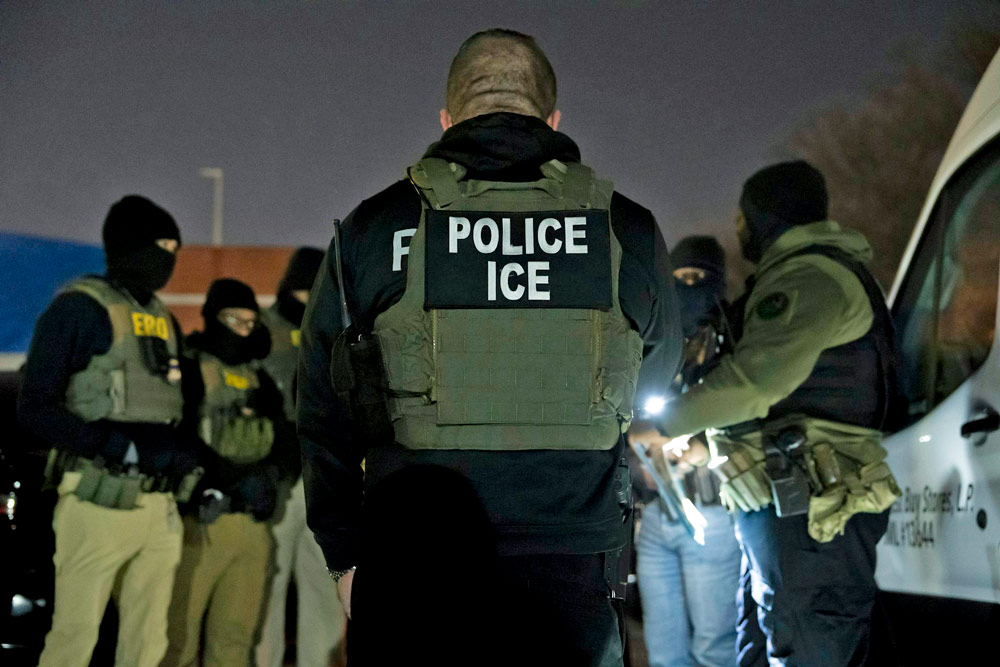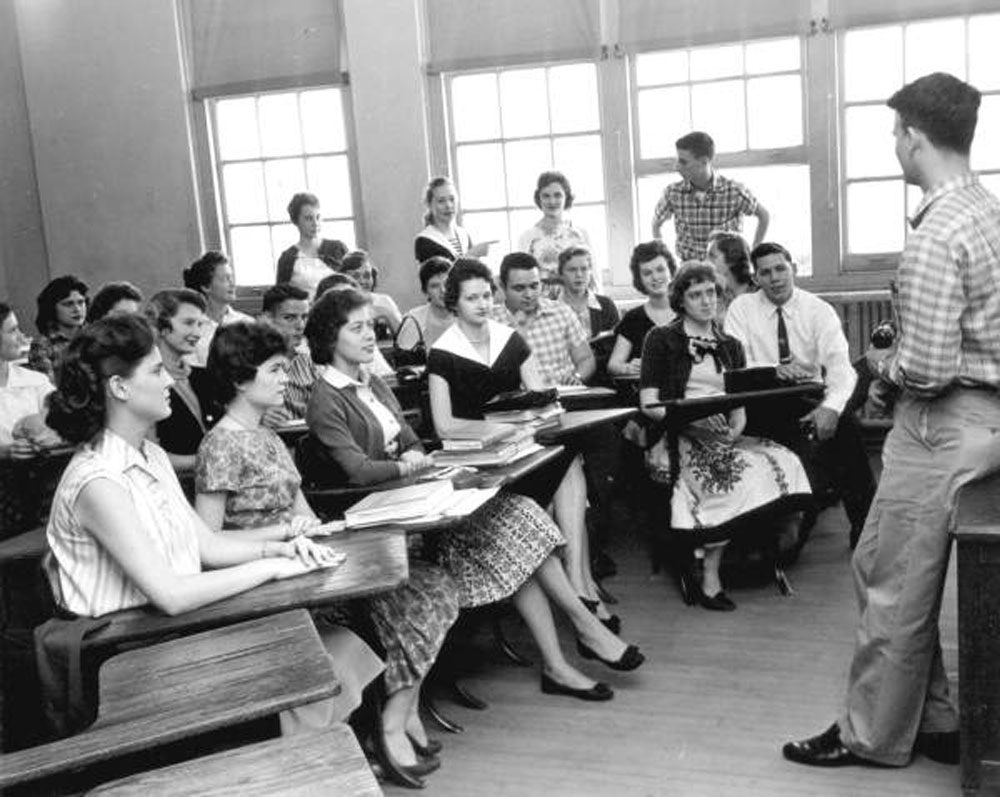Written by Daniel H. Magilow
Recently, Minnesota Governor Tim Walz stirred some controversy when he likened the U.S. Immigration and Customs Enforcement to the Gestapo, the infamous secret police of Nazi Germany.
In a May 2025 speech at the graduating ceremony of the University of Minnesota Law School, Walz claimed that Donald Trump’s “modern-day Gestapo is scooping folks up off the streets.”
They are being transported to foreign torture dungeons in unmarked vans while wearing masks. They are not given the opportunity to defend themselves or even to say farewell to a loved one; instead, they are seized by masked agents, pushed into the vans, and vanish. Walz went on.
Since President Donald Trump took office again in January 2025, ICE, which is responsible for implementing immigration laws, has significantly boosted the amount of arrests of immigrants across the country. Since then, the number of immigrants arrested by ICE has more than doubled in 38 states.
Rep. Seth Moulton of Massachusetts stated in April that ICE is similar to Adolf Hitler’s secret police, the Gestapo, as other Democratic legislators have done in recent months, notably U.S. Rep. Dan Goldman of New York.
However, are ICE’s methods truly similar to those of the Gestapo?
People frequently ask me whether this analogy is accurate because I am an expert on the Holocaust and modern Germany. It’s a complex answer.
Understanding the Gestapo
Shortly after Hitler was appointed chancellor of Germany in January 1933, the Nazi administration formed the Gestapo, which is short for the German phrase Geheime Staatspolizei, which means secret state police. The Gestapo’s duties included keeping an eye on opposition activity and looking into political crimes. Later, it imposed racial laws throughout occupied Europe, including Germany.
The Gestapo’s everyday tasks included tracking down and identifying political opponents of the dictatorship. Suspects were held, tortured, questioned, and arrested; others were transported to detention camps. It frequently used anonymous denunciations to find suspects, which came from dissatisfied neighbors or rival businesses as well as from fervent Nazis who alerted the Gestapo to Jews and other individuals.
Despite having a very modest workforce, the Gestapo gave the impression that it was omniscient, omnipotent, and omnipresent, according to one academic.
It stifled opposition and upheld the regime’s will by instilling a generalized dread rather than using force. The Nazi government itself has long since been replaced by this atmosphere of fear and danger.
ICE s operations
ICE is smaller both in absolute magnitude and per capita, with about 21,000 officers and personnel working in a nation of over 340 million. In a nation of 79 million people, the Gestapo employed between 40,000 and 50,000 people at its peak, which occurred between 1943 and 1945.
With an extra $75 billion in funds that Congress authorized in July as part of Trump’s tax and spending bill, ICE is expected to grow its operations over the coming years.
Additionally, the Gestapo had a broader responsibility than ICE, which is primarily focused on immigration. It was in charge of repressing not only immigration law infractions but also all kind of political protest.
ICE uses far more sophisticated tools, such as social media surveillance and facial recognition, than were available in the 1940s.
Technically, ICE’s operations are more transparent than those of the Gestapo because it is a federal agency and its data is accessible to public and political scrutiny. However, the Department of Homeland Security’s ICE was categorized as a security/sensitive agency in June 2020 by the first Trump administration. People find it more difficult to request and get information concerning ICE’s work through Freedom of Information Act records requests as a result of this designation.
Similar to the Gestapo, ICE occasionally appears to be performing. For example, during a dramatic raid of a cannabis farm in California in July, operatives wearing balaclavas sprayed tear gas on demonstrators.
The Gestapo in today s world
The term “Gestapo” has become a colloquial way of referring to police persecution in the United States since World War II and the fall of the Nazi authority.
From the 1943 film Casablanca and The Black Gestapo in 1975 to Inglourious Basterds in 2009 and Jojo Rabbit in 2019, the term “Gestapo” has become widely used to refer to the worst kind of totalitarian persecution.
Despite being controversial, Walz’s May comments were by no means unique in politics. Gestapo and Nazi parallels are frequently used by politicians of both parties and political analysts to disparage their rivals.
Rep. Marjorie Taylor Greene of Georgia made a memorable and widely shared gaffe in 2022 when she mistakenly used the name “Gestapo” to refer to gazpacho soup. She said that Nancy Pelosi was now spying on members of Congress.
In 2024, as the Justice Department brought charges against Trump for trying to rig the 2020 election, Trump accused President Joe Biden of leading a Gestapo regime.
According to the nonprofit organization Foundation to Combat Antisemitism, the term “Gestapo” was used 184% more frequently on social media overall between 2017 and 2024.
For a variety of reasons, including historical inaccuracy and offending those whose families are still affected by the Holocaust, the U.S. Holocaust Memorial Museum is one of the groups that has denounced analogies to the Holocaust and the Nazis.
What historical comparisons really say
Analogies can help make difficult concepts easier to understand. However, they run the risk of trivializing and oversimplifying history, particularly when they span decades and wildly disparate political settings.
Comparing ICE to the Gestapo, in my opinion, is more a reflection of contemporary concern and a fear that the United States is moving toward authoritarianism reminiscent of Germany in the 1930s than it is a historical judgment.
There are, regrettably, many options available to politicians and other public figures seeking historical parallels to contemporary law enforcement organizations that employ harsh tactics: the Soviet Union’s secret police agencies, the KGB and NKVD; Iran’s former secret police and intelligence agency, SAVAK; or East Germany’s Stasi, to mention a few.While none of them groups can be simply compared to ICE, they all blatantly abused human rights and denied suspects due process in order to support political regimes.
But instead, the Gestapo and other Nazi allusions are most frequently invoked by politicians and political analysts.
In the end, the Holocaust, Nazi Germany, and the Gestapo provide a potent, universal cultural point of reference. The worst repercussions of evil left unrestrained are exemplified by the tragedies of World War II.
They have evolved into the world’s primary moral framework and moral compass. The Holocaust and World War II continue to serve as the prism through which Americans view the present in a time of divisiveness.
![]()
German professor Daniel H. Magilow teaches at the University of Tennessee.







